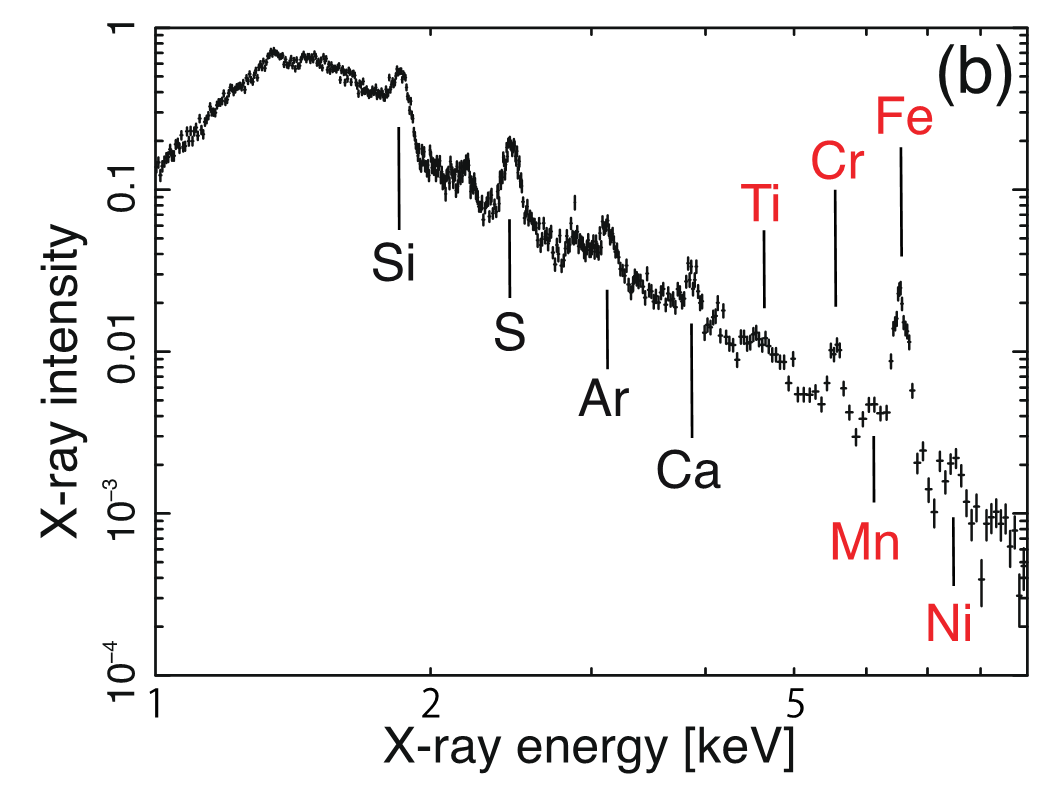DATE2021.06.09 #Press Releases
A rogue in the “Cosmic Standard Candle”?
-The relic of the densest white dwarf has been detected in the remnant of its supernova.-
Overview of the press release


Figure:
Left: X-ray image of the supernova remnant 3C 397. Red indicates the spatial distribution of iron, green indicates the spatial distribution of silicon, while blue is the relative abundance of chromium compared to iron. A region rich in chromium (dark blue) can be seen in the southern part of the remnant.
Right: X-ray spectrum of material within the white circle shown in the left-hand figure. Titanium, chromium, manganese and nickel were detected in addition to iron, which is the main element formed during a Type Ia supernova (credit:ISAS/JAXA, Ohshiro et al.).
To read the full press release, please visit the website of the Institute of Space and Astronautical Science (ISAS), JAXA.
Publication details
Journal Astrophysical Journal Letters
Title Discovery of a Highly Neutronized Ejecta Clump in the Type Ia Supernova Remnant 3C 397Authors Yuken Ohshiro et al.DOI


